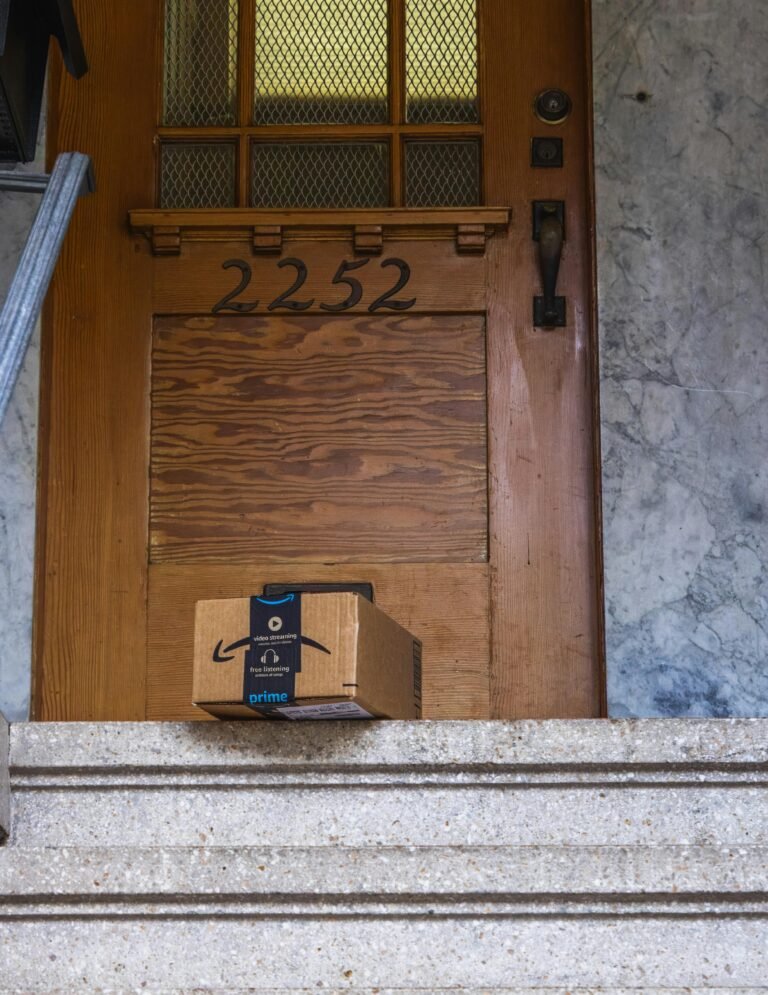How the Bleep Do I Get Rid of Fleas Without Nuking My House?
Ah, fleas – those tiny, bloodsucking invaders that turn your home into an itchy nightmare. Whether you’ve found a few fleas on your pet or a full-blown infestation is driving you up the wall, the good news is you don’t have to resort to dangerous chemicals or full-scale fumigation to evict these freeloaders. With a solid strategy and the right tools, you can tackle fleas naturally and effectively. So, buckle up and let’s dive into the comprehensive guide on how to get rid of fleas without nuking your house!
Why the Bleep Are Fleas So Hard to Get Rid Of?
Before we get into the action plan, let’s take a second to understand why fleas are such persistent buggers. The key lies in their life cycle: fleas go through four stages – egg, larva, pupa, and adult. The tricky part is that many treatments only kill adult fleas, leaving the eggs, larvae, and pupae to repopulate your home. That’s why a one-time fix rarely works, and you end up battling fleas for weeks or even months if you’re not careful.
Fleas also multiply fast. A single flea can lay 50 eggs per day, and those eggs can hatch in as little as 2 days under the right conditions. So even if you kill the adults, the eggs they leave behind can restart the infestation unless you’re thorough with your approach.
The Ultimate Flea Eradication Plan (Without Nuking Your House)
Ready to get to work? Here’s a step-by-step guide to getting rid of fleas naturally and safely without turning your home into a chemical wasteland.
1. Treat Your Pet: The Ground Zero for Fleas
Your pet is likely where the fleas got their foothold, so the first step in flea control is treating your pet. Don’t worry, though, you don’t need harsh chemicals or toxic flea collars. There are plenty of pet-friendly, natural solutions.
- Flea Baths: Start with a gentle flea bath using a natural flea shampoo. You can also make your own DIY flea bath using castile soap and a few drops of essential oils like lavender or eucalyptus (just make sure they’re safe for your specific pet). Wash thoroughly, paying attention to the neck, belly, and tail – fleas love these warm spots.
- Flea Comb: After the bath, use a fine-tooth flea comb to manually remove any fleas clinging to your pet. Dip the comb in soapy water after each stroke to drown the fleas.
- Flea Preventatives: Once your pet is clean, use a natural flea preventative to keep fleas from coming back. Many vets recommend products like oral flea medications (which don’t rely on harsh chemicals), or topical treatments made from natural ingredients like essential oils. You can also try a DIY flea collar by adding a few drops of diluted essential oils (like cedarwood or lemongrass) to your pet’s collar.
2. Arm Your Home with Natural Flea Killers
Your house is next on the hit list. Fleas love to hide in carpets, rugs, bedding, and upholstered furniture, so be prepared for a bit of spring cleaning. But instead of bombing your home with toxic chemicals, here’s a list of natural flea-killing solutions.
- Diatomaceous Earth (DE): This non-toxic powder is a natural flea killer. It works by drying out fleas’ exoskeletons, effectively killing them without harmful chemicals. Sprinkle DE on carpets, rugs, and pet bedding. Be sure to vacuum it up after a few hours (or overnight) and reapply every few days until the infestation is gone. Always use food-grade DE, as it’s safe for pets and humans.
- Baking Soda and Salt: Another DIY option is a combination of baking soda and salt. These kitchen staples dehydrate fleas and their eggs, killing them on contact. Sprinkle the mixture on your carpet and upholstery, let it sit for 24-48 hours, and then vacuum thoroughly. Repeat every few days.
- Herbal Flea Spray: Create a natural flea spray using lemon and rosemary. Boil thin slices of lemon and a few sprigs of rosemary in water, let the mixture cool, and pour it into a spray bottle. Use it to mist your pet’s bedding, carpets, and furniture.
- Essential Oils: Fleas hate certain essential oils, so you can use them as a natural deterrent. Mix a few drops of cedarwood, eucalyptus, or lavender oil with water in a spray bottle and mist it on your furniture and carpets (avoid areas where your pet might lick or rub, though, as some oils can be toxic to pets in high concentrations).
3. Deep Clean Like You Mean It
Now that you’ve treated your pet and laid down flea-killing powders, it’s time to pull out the vacuum. Regular, thorough vacuuming is one of the most effective ways to get rid of fleas and their eggs, larvae, and pupae.
- Vacuum Every Day: Vacuum carpets, rugs, furniture, and any cracks or crevices where fleas might be hiding. Fleas love dark, secluded areas, so focus on corners and under furniture. Vacuuming can suck up fleas, eggs, and larvae, and the vibration can even stimulate pupae to hatch, which makes them vulnerable to treatments.
- Dispose of the Bag: After vacuuming, immediately dispose of the vacuum bag or empty the canister outside. Fleas can escape from inside the vacuum, so it’s important to get rid of the bag or debris as soon as you’re done.
- Wash Bedding: Wash your pet’s bedding and any soft items they regularly use in hot water to kill fleas and their eggs. Dry them on high heat for extra flea-killing power.
- Steam Clean: If your carpets are heavily infested, consider using a steam cleaner. The high temperature will kill fleas, larvae, and eggs.
4. Break the Flea Life Cycle: Prevent Future Flea Attacks
Once you’ve dealt with the current flea population, the next step is prevention. The key to long-term flea control is breaking the flea life cycle so that no new fleas can take hold.
- Regular Flea Checks: Continue to check your pet for fleas regularly, even after you’ve cleared the infestation. Use a flea comb at least once a week and inspect their fur, especially in warm spots like under the collar or around the tail.
- Natural Repellents: Make sure your pet is protected with a natural flea repellent to keep new fleas from latching on. Products containing essential oils like cedarwood, peppermint, or lemon can help ward off fleas, but make sure they’re safe for your specific pet before use. You can also explore flea-prevention chews or collars that use natural ingredients instead of harsh chemicals.
Maintain a Clean Environment: Regular vacuuming, washing bedding, and cleaning your home is crucial to prevent fleas from finding a foothold. Fleas thrive in cluttered, dusty spaces, so keeping your home clean is key to flea control.
Treat Outdoor Areas: If your pet spends time outdoors, don’t forget to treat those areas as well. Fleas can lurk in shaded, moist areas like under porches, in gardens, and even in tall grass. Here are some natural ways to treat your yard:
Nematodes: These tiny, worm-like organisms feed on flea larvae in the soil. You can buy them online or at gardening stores, and they’re completely safe for pets and humans.
Cedar Chips: Fleas hate the smell of cedar, so consider spreading cedar chips around your yard or in your pet’s outdoor bedding area.
Yard Spray: Mix a natural flea spray using water, vinegar, and a few drops of essential oils like peppermint or eucalyptus. Spray it around the areas your pet frequents outside.
5. Get Strategic With Flea Traps
While the natural powders and treatments do their job, you can use flea traps to catch any rogue fleas still bouncing around. Here’s a simple DIY flea trap:
DIY Flea Trap: Fill a shallow dish with water and add a few drops of dish soap. Place a light source like a desk lamp above the dish overnight. The light will attract fleas, and the soapy water will trap and drown them.
You can place these traps around your home in areas where fleas are most active, such as near your pet’s bed, in the living room, or in any areas where you’ve noticed flea activity.
6. Flea Control Takes Time, So Stay Persistent
One of the most frustrating things about fleas is their life cycle. Even after you’ve vacuumed, treated your pets, and laid down natural powders, it can take weeks to fully eliminate them. That’s because flea eggs can lie dormant for up to two weeks, and pupae can survive in a cocoon for months waiting for the right conditions to hatch.
Don’t get discouraged if you see fleas popping up after you’ve started your flea control plan. Continue vacuuming regularly, treating your pet, and using flea-killing remedies to prevent the flea cycle from starting again.How Long Does It Take to Get Rid of Fleas Without Chemicals?
The timeline for getting rid of fleas without chemicals depends on the severity of the infestation and how consistent you are with your flea control measures. In general, it can take:
1-2 weeks: To get rid of the adult fleas that are currently active.
3-4 weeks: To break the flea life cycle and eliminate all stages of fleas (eggs, larvae, pupae, and adults).
Ongoing prevention: Fleas are opportunists, so keeping up with flea checks and cleaning routines is essential to prevent future infestations.
Final Tips for a Flea-Free Home
Keep Flea-Repellent Plants: Some plants naturally repel fleas. Try keeping lavender, rosemary, or lemongrass around your home or in your yard to keep fleas at bay.
Set a Flea Prevention Schedule: Mark your calendar with regular reminders to vacuum, check your pet, and treat your home. Consistency is key to long-term flea control.
Consult Your Vet: If you’re unsure about what’s safe for your pet or need stronger flea prevention methods, consult your vet for the best options that suit your pet’s needs.
The Bottom Line: Patience and Persistence Pay Off
Getting rid of fleas without chemicals might take a little more time and effort than bombing your home with toxic products, but it’s completely doable and much safer for your pets, family, and the environment. By combining natural flea treatments, thorough cleaning, and a consistent prevention routine, you can tackle fleas and enjoy a flea-free home without resorting to harsh chemicals.Fleas are persistent, but with this non-toxic, step-by-step approach, you’ll be able to kick them out and keep them out for good.
FAQs
Q: How long does it take to get rid of fleas naturally?
A: Depending on the severity of the infestation and how diligent you are, it can take anywhere from 2-4 weeks to completely get rid of fleas using natural methods.
Q: Can I use essential oils to get rid of fleas?
A: Yes, certain essential oils like cedarwood, lavender, and eucalyptus are known to repel fleas. However, always dilute them and consult your vet before using them on pets, as some oils can be toxic to animals.
Q: Is diatomaceous earth safe for pets?
A: Food-grade diatomaceous earth is safe for pets and humans when used properly. However, avoid inhaling the dust, and make sure to vacuum it up after it has settled.
Q: How often should I vacuum when dealing with fleas?
A: Vacuum every day for the first couple of weeks to capture adult fleas, eggs, and larvae. After the infestation is under control, vacuum regularly to prevent future outbreaks.
Q: How do I prevent fleas from coming back?
A: Regularly check your pet for fleas, wash their bedding, vacuum your home, and use natural flea preventatives like flea collars or sprays. Keeping your yard clean and using nematodes can also help prevent outdoor fleas.
By following this guide and staying persistent, you’ll be well on your way to a flea-free home—no nukes needed!














